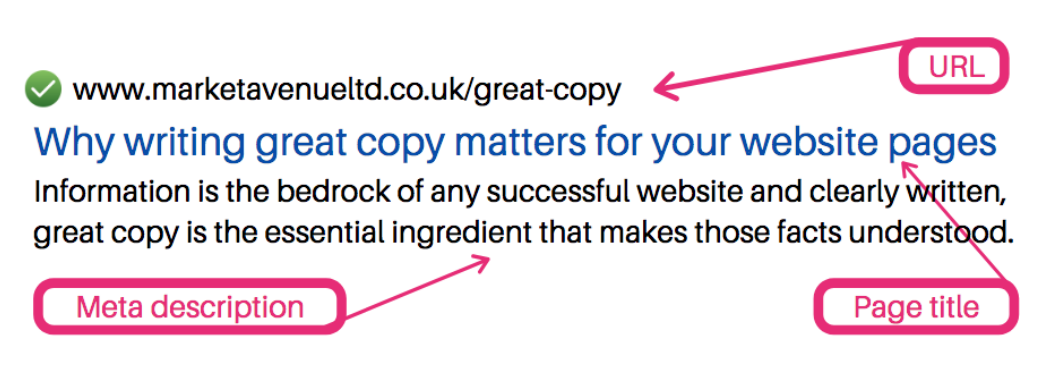
08 Apr How to write good online copy for your readers and search engines
Writing good content for your website can be a struggle to know where to even start. Stone Ladies Advocate and copywriting expert Anna Woolliscroft from Market Avenue Limited shares some of her tips for engaging with your audience and the Google search bots.
What makes good copy?
First and foremost, your copy should always address the needs of your audience. Think about the ‘intent’ of the person visiting your website and what they are searching for. Why do they need your services or products and what do they need to find out in order to enquire?
Your words should serve to put you in between your ideal audience and the solution they are searching for. Seek to understand the questions your audience is asking and why. Think about the following elements.
- What pains do your customers have now or what are they worried about in the future?
- What pleasures are they experiencing now or what desires are they looking to fulfill in the future?
- What proof can you offer that your service or product delivers results? Include facts and figures to give reassurance and evidence that the investment in is tried and tested. Testimonials work well here too.
- Try to answer journalism style questions – Who? What? When? Where? Why? And how?
A keyword phrase is a highly significant set of words used for the purpose of driving qualified traffic to your website from search engines.
How should you structure your copy?

Choose a keyword phrase that will optimise your page. This phrase will need to appear in several places.
Meta Data
Google emphasises the beginning of a page. The screenshot above illustrates the phrase ‘great copy’ and is included in the:
- Meta data URL 75 characters (browser URL)
- Meta date title (or page title) 50-60 characters
- Meta description 50-160 characters
For your meta description think Google elevator pitch and craft a succinct sentence or two outlining exactly what your page is about. Include secondary keywords where possible.
Repeat the main keyword phrase two or three times throughout the copy – in the first 100 words, towards the end of the page, and as part of the page formatting (see next bullet points). Also use alternative phrases that maintain the same context.
A really valuable keyword, one that lots of businesses are competing for, needs to be repeated more times so write more copy to even out its occurrence.
Links
All pages need to link together to be seen by search engines. This doesn’t imply that all pages need to be on the main navigation bar but they do need to be accessible internally via a link from another page. Aim for at least two internal links to other pages on the same website and one external link to a different, but relevant website.
How to format your copy
Copy formatting is concerned with reader experience and tarting up your pages will make them visually pleasing and easier to read.
- Split your text into short paragraphs
- Include video – use file names and tags appropriately
- Include images – use file names and tags appropriately
- Use frequent subheadings with one using the key phrase
- Add bullet points, bold and italics using the key phrase
Good formatting will encourage visitors to stay on your page and website for longer, which is excellent in the eyes of Google.
It’s important to be consistent in your use of language, for example using UK English not US words, ensuring the appropriate use of punctuation marks, and using lower and upper case appropriately.
Always revisit your copy after a day or two and have it proofread by someone else as it’s guaranteed you will have missed something.
Some tools to help you along the way
Google tools are free and ideal when conducting keyword research, checking the health of your web pages and for understanding how pages are performing.
Mozbar is a free tool that will check the domain authority and page authority of a website. This provides some insight for competitor analysis and can identity where improvements can be made.
SEMrush is brilliant at identifying keywords, competitors and insight for improvement.
Yoast is a WordPress plugin that helps you address the elements of copy structure and formatting with an easy traffic light system.
For more support and guidance on writing great content or to develop the voice of your business – online, offline and anywhere beyond talk to Anna at Market Avenue Limited on 07791594091 or email: [email protected].
Like advice printed?
Download a handy PDF of Anna’s copywriting advice.


Sorry, the comment form is closed at this time.